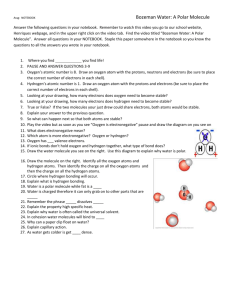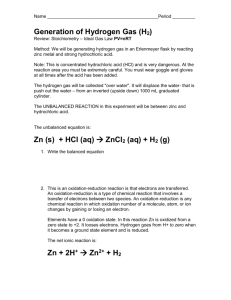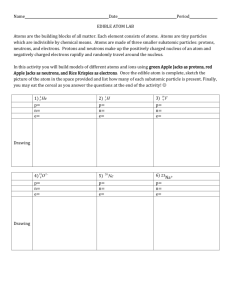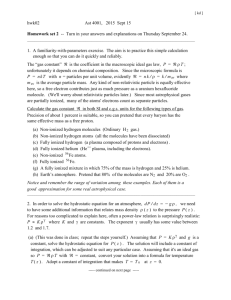Name
advertisement
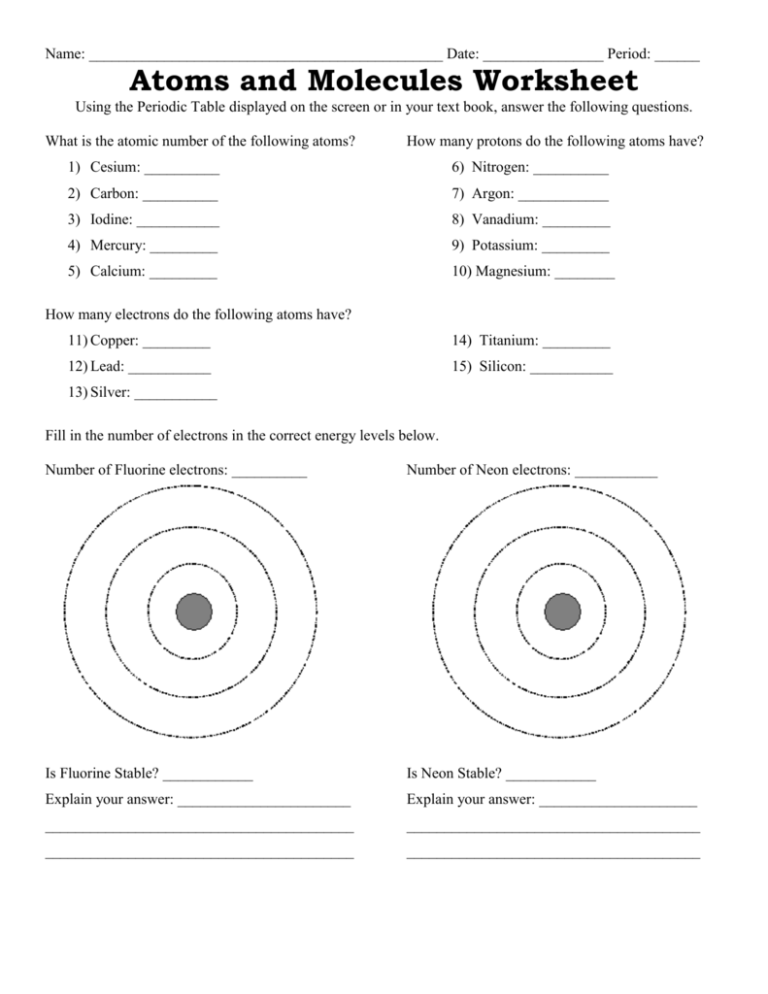
Name: _______________________________________________ Date: ________________ Period: ______ Atoms and Molecules Worksheet Using the Periodic Table displayed on the screen or in your text book, answer the following questions. What is the atomic number of the following atoms? How many protons do the following atoms have? 1) Cesium: __________ 6) Nitrogen: __________ 2) Carbon: __________ 7) Argon: ____________ 3) Iodine: ___________ 8) Vanadium: _________ 4) Mercury: _________ 9) Potassium: _________ 5) Calcium: _________ 10) Magnesium: ________ How many electrons do the following atoms have? 11) Copper: _________ 14) Titanium: _________ 12) Lead: ___________ 15) Silicon: ___________ 13) Silver: ___________ Fill in the number of electrons in the correct energy levels below. Number of Fluorine electrons: __________ Number of Neon electrons: ___________ Is Fluorine Stable? ____________ Is Neon Stable? ____________ Explain your answer: _______________________ Explain your answer: _____________________ _________________________________________ _______________________________________ _________________________________________ _______________________________________ Covalent Bond Drawing: Water (H2O) is made of three atoms (2 hydrogen atoms and 1 oxygen atom). Fill in the table below and then add the number of electrons to each atom in the picture. Atom Number of electrons Hydrogen #1 Hydrogen #2 Oxygen Hydrogen atom #2 Hydrogen atom #1 Oxygen atom 1) By itself, why is oxygen unstable? _______________________________________________________ 2) By itself, why is hydrogen unstable? ______________________________________________________ 3) How many electrons does oxygen share with hydrogen #1? __________ Hydrogen #2? _________ 4) When both hydrogen atoms share with oxygen, how many electrons are in its outer energy level? Is the oxygen atom stable? ___________________________________________________________________ Ionic Bond Drawing: Fill in the two tables based on the number of electrons before and after bonding. Drawing Directions a. Add the correct number of electrons to each atom. b. Using an arrow, show the electrons that will be transferred. 5) Why will lithium floride (Li F) be created from these two atoms? ____________________________________________________________________________________ ____________________________________________________________________________________





